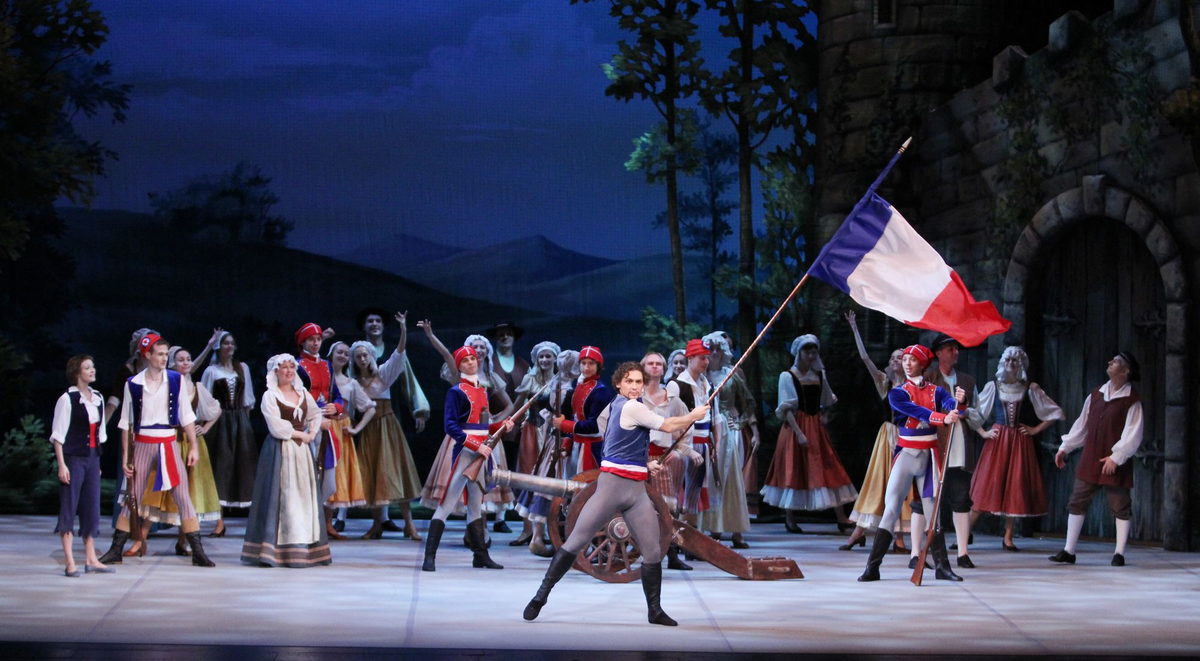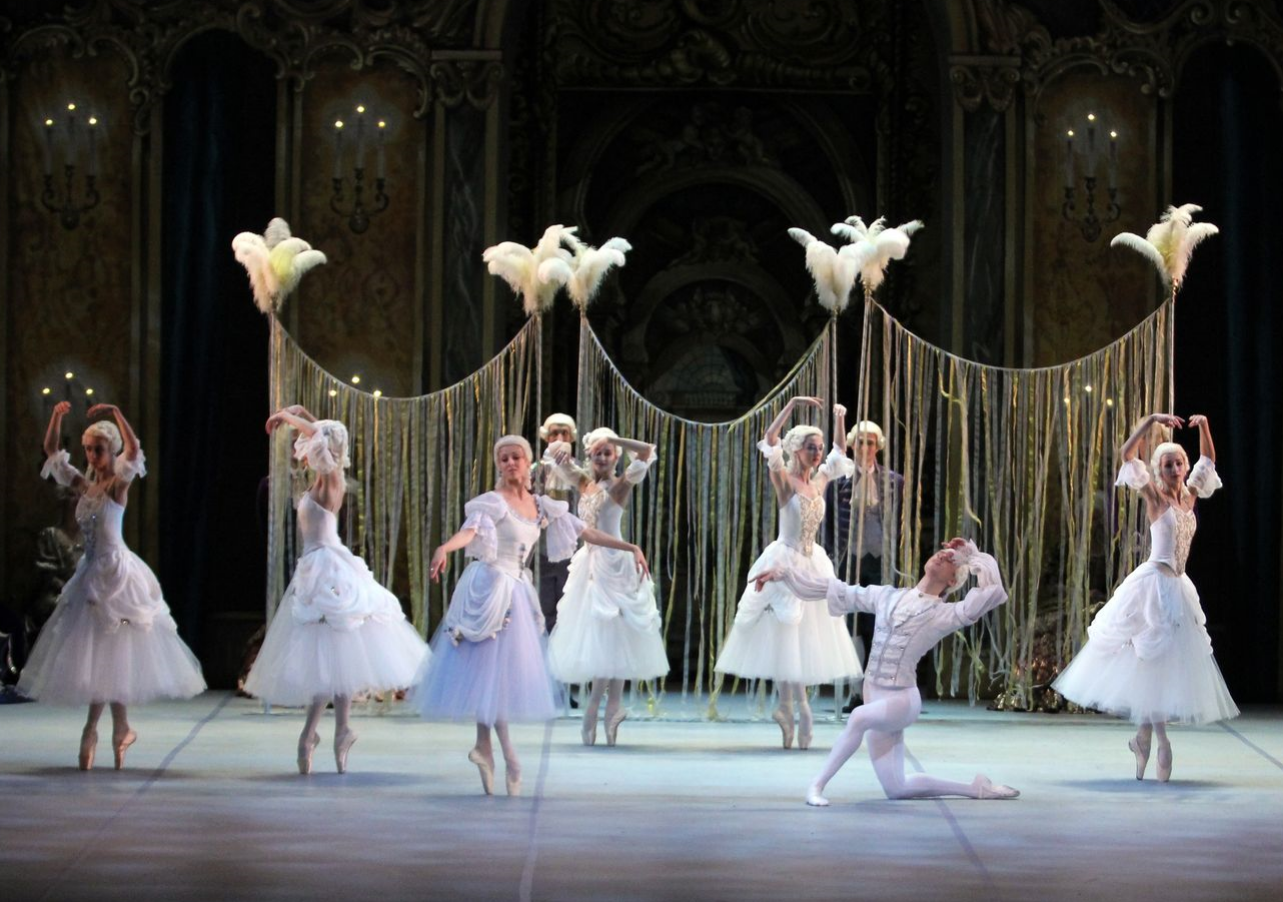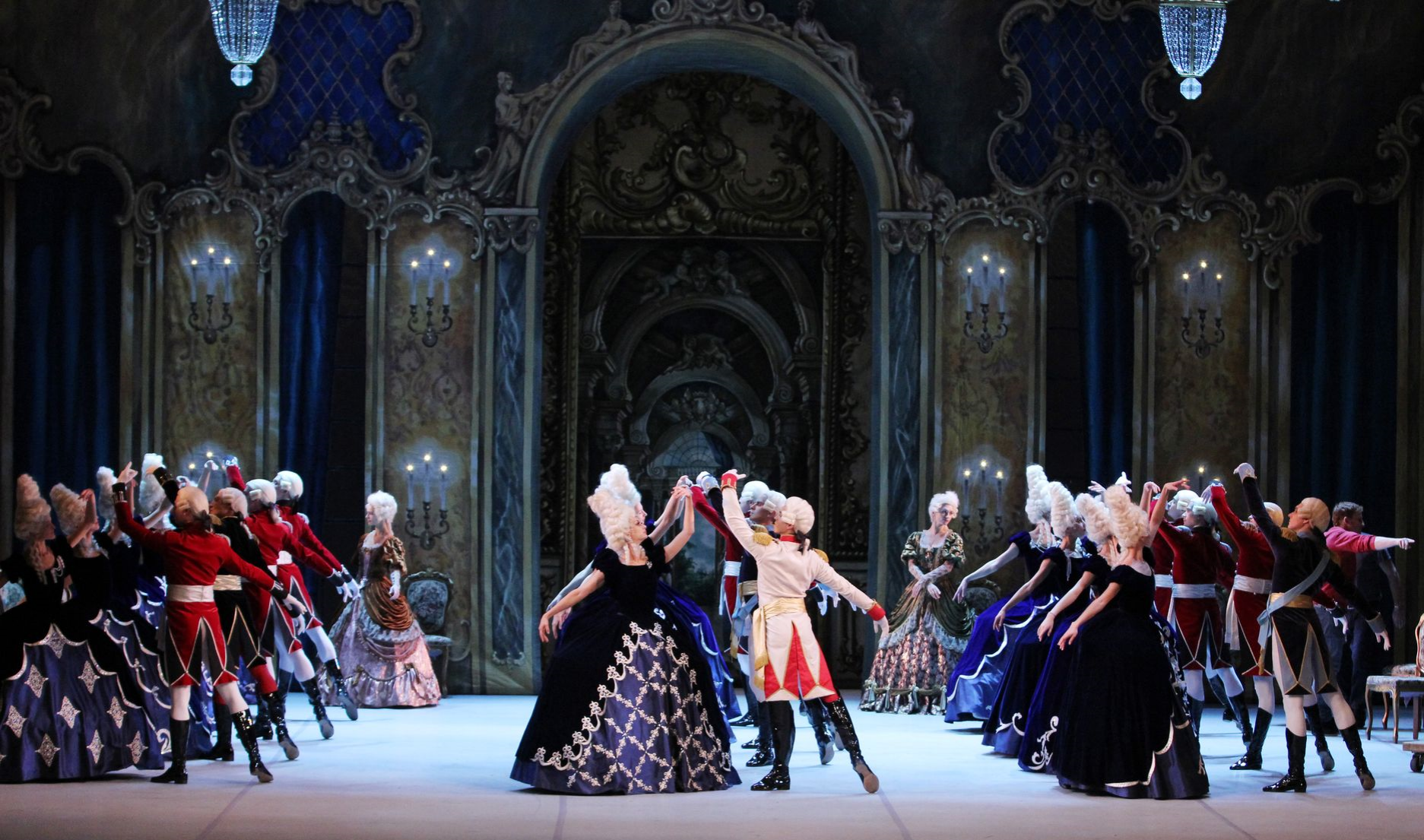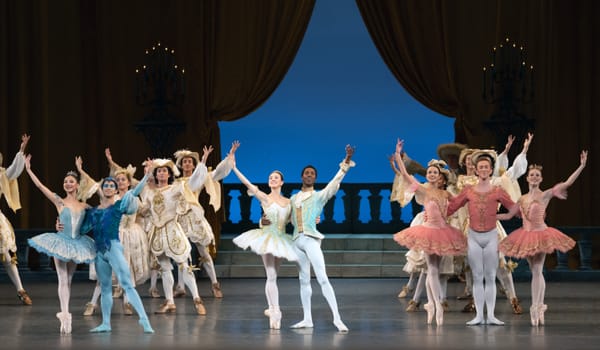And Paris Burned with Passion

“Flames of Paris”
Mikhailovsky Ballet
David H. Koch Theater
New York, NY
November 16, 2014 (matinee)
How could you make Stalin’s favorite revolution-themed ballet a success in 2014? A faithful reconstruction would hardly seem like the right strategy, yet that is precisely what Mikhail Messerer, Mikhailovsky Ballet’s Ballet Master in Chief, did in staging his revival of Vasily Vaynonen’s classic “Flames of Paris.” The approach turned out to be worth the risk, earning the ballet two nominations for the prestigious Golden Mask Theatre Award in Russia in 2014 (for best choreographic work and best choreographer) and a standing ovation from the New York audience.
Reviving the ballet was a significant undertaking both logistically, as many of the dance scenes were lost to time, and in terms of thematic relevance. The intent of the original version was to draw parallels between the French Revolution and the Bolshevik Revolution, and celebrate the overthrow of aristocratic government and rise of the “common man” against the upper class society – hardly something that would resonate with audiences today. Perhaps not coincidentally, an earlier restaging done by Alexei Ratmansky for the Bolshoi Ballet in 2008 shied away from the revolutionary themes, altering the libretto and presenting the ballet from an a-revolutionary angle, if not an anti-revolutionary one. Messerer bravely went the other way with his approach in this 2013 reconstruction, embracing the ballet’s intended nature but also giving it a new dimension.
While it is still apparent how “Flames” accomplished its political goals when it was first staged to commemorate the 15-year anniversary of the Russian revolution in 1932, Messerer adjusts the viewer’s aperture in presenting the work. To keep the audience engaged, the focus is set on the things embedded in the revolutionary fabric that add luster to its flames, specifically on freedom and its many forms. Throughout the ballet’s imagery surrounding the 10th of August storming of the Tuileries Palace, Messerer’s sans-culottes epitomize that idea: they seem unconstrained by the world, bursting with passion, and with their unbound self-expressions they stand against the restrained and restraining aristocrats.
Next to the contagious energy, enthusiasm, and joie de vivre of the common people the aristocrats don’t really look like the anti-heroes, but instead appear unhappy and imprisoned in their conventions and social constraints. If only these nobles could shake off their fancy wigs, and squeeze out of their binding dresses! Surely they’d be happier and wouldn’t act out their pent up emotions in such outbursts as kicking a man to the ground in the first scene, or shooting an actor in cold blood in the second.

Messerer’s presentation of all the historical and character dances intended by Vaynonen (who himself had been a character dancer), and all of the pantomime, only helped illustrate the duality. As his basis, Messerer took not the 1932 original, but Vaynonen’s 1947 revision, which truncated certain scenes and restaged certain dances, but left the dramaturgy intact. The court scenes are filled with historical dances (a discipline still taught at Russian ballet schools today and expertly performed by the company’s corps) and are permeated with restraint. The character dances, from the Basques, to danse de Marseille to clog-shoed danse d’Auvergne fill the street scenes with lively spirit. The classical ballet components are similarly imbued with thematically appropriate reserve and openness in the respective court and street scenes and representative characteristics in the allegorical dances of “freedom,” “equality” and “fraternity” in the Act 3 divertissement.
Importantly, Messerer’s own choreography blends seamlessly with the faithfully reconstructed Vaynonen’s steps, and shows the benefits of his unique experiences, memories and access. Whilst a child Messerer himself appeared in performances of the original ballet at the Bolshoi, and conversations with his famous ballet relatives, mother Sulamith Messerer and legendary uncle Asaf Messerer, both of whom danced in the original work, surely helped as well.
Of course, any ballet only works to the extent of the dancers' execution, and this is ever more true with “Flames.” The work has many protagonists, but the viewing experience is not really about them as the original librettists focused instead on the historical events. There are no individual plots, just things that happen to the characters here and there: the Marquis shares news of the rebellion with the court, Jeanne witnesses her father kicked in the first scene, her lover Philippe leads the Marsaillais in the rebellion, the killing of the actor Antoine is the catalyst for the actress Diana tipping off the revolutionaries to the aristocrats’ plans; Teresa, the deeply passionate Basque, gets killed while storming the castle. Instead of a traditional plot, the ballet presents a feeling fueled by the many individuals toggled to a particular historical event, and a solid performance is necessary from all to maintain the work’s thrust.
Fortunately, most of the troupe was up to task. The court scenes featured impeccable epaulements, head positioning, and refinement of steps, and helped paint that world as one of form, norms and properness. There was delicacy and reserve on stage from all the dancers, even the actress and actor performing for the nobles: when a cupid’s arrow hit Leonid Sarafanov’s Antoine, he acted out the impact with over-the-top sophistication and delicacy. His partner, Irina Perren, showed equally frou-frou mannerisms as actress Diana, up until the point when he was shot, which brought her and her style into the revolutionaries’ fold.

The contrast of the street scenes was electrifying, and expectedly the famous Basques dance stole the show. Unlike the Bolshoi version, where the dance is performed by Philippe and Jeanne, the dancing here is properly done by character dancers with Teresa and others in the lead. The cast, led by a fiercely confident Mariam Ugrekhelidze as Teresa, was show-stopping in the size and power of their movements, filling each of the heavily accented beats of Boris Asafiev’s score with precision.
Ivan Vasiliev, as Philippe, brought the explosive bag of tricks he’s so famous for, showcasing the prodigious altitude and power of his jumps. His partner Jeanne was danced by Angelina Vorontsova, who like Vasiliev was formerly with the Bolshoi but is perhaps best known in the West as the girlfriend of Pavel Dmitrichenko, the dancer responsible for the acid attack on Sergei Filin. Her dancing was lovely in its elegance, but the reserved style seemed better suited for the court scenes (indeed she danced the actress role in the past) and not amidst all the revolutionaries’ excitement. Besides the contrast to Vasiliev’s no-holds-barred bravura, the partnership seemed mismatched on a purely physical level: Vorontsova’s tall stature made her look large next to Vasiliev, and the several technical missteps, including turns where she missed her balance, compounded the problem.
Perren, dancing the allegorical Freedom duet with Marat Shemiunov, rivaled Vasiliev with her command of the stage. Dressed in a red tunic she towered over the jubilating crowds for most of the duet in complex lifts, without once revealing how truly difficult the one-armed supports are to execute. Valeria Zapasnikova, Svetlana Bednenko and Anastasia Soboleva were as uniform as their identical blue dresses in the Equality dance, and their piqués were so light they looked almost airborne. When Andrey Yakhnyuk and Victor Lebedev in white took turns in the Fraternity dance they gave each other equal time in the spotlight, but then appeared immaculately synchronized when dancing together.
Without a central personal story to provide dramatic anchoring, “Flames” may not be the ballet for personal attachments, but the impassioned dancing more than made up for it and therein lies the ballet’s uniqueness. What makes this “Flames” truly special though is Messerer’s genius: his ability to present both a glimpse of the historic, and an eyeful of the presently engaging. Who knew that a faithful repainting of an old work on new canvas can make it feel new and fresh?
copyright © 2014 by Marianne Adams



